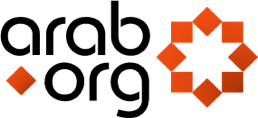
Can data and analytics save the world? Here are several use cases of people and companies targeting real problems.
Helping the homeless, fighting human trafficking, improving the adoption rates of dogs in a shelter, reducing pollution and greenhouse gas emissions from cities, and helping people in Sierra Leone predict when the components of their water systems need service. These are some of the ways that data, analytics, and AI have been harnessed for good — to save lives, improve the world, or just connect the right dog with the right human.
“Data for good” is a growing movement, championed by individuals, non-profits, and analytics vendors, and it was recently chronicled by Gartner research VP and analyst Cindi Howson at the Gartner Data and Analytics Summit in Orlando, Florida.
Howson said the mission is a personal one for her that started when she was a college student. She was working two jobs to pay her own way, and after she wrote that big tuition check she had only $2 left to buy hotdogs and a box of macaroni to last a week. She knew that financially there wasn’t much separating her from the homeless people she had passed on the streets of New York City every night.
“That very dark time in my life opened up a lifelong empathy for homeless people,” she said. As a BI and analytics expert at Gartner, Howson has brought that empathy to her work, collecting and sharing the stories of technology companies that are contributing to the greater good with projects that use data and analytics for good. Such projects can also have side benefits for companies, too.
“We know that the valuation of firms that have an environmental and social performance scorecard is higher than those that don’t, and they have a lower cost of capital,” Howson said. “We can’t say there’s causation there. We can only say there’s correlation.”
But the benefits go beyond valuations and finance. They can also help organizations recruit workers.
“We do believe we see, particularly with Millennials, that employers with these programs are more attractive employers,” Howson said. Gartner is predicting that organizations with such programs will do better in terms of hiring in the years ahead. “Through 2020, employers with data for good and AI for good programs will have a 20% higher retention rate and a 50% faster data analytics job fill rate.”
That’s a big deal in a space where half the job openings go unfilled for more than 6 months, and there are a total of 200,000 job openings, according to Howson.
“Again, you have to meet the minimum of pay, of a good job,” she said. “But all things being equal, we are seeing that these cultures, these programs, can make a difference in retention and employee loyalty and also community relationships.”
Howson also offered some examples of the many data for good initiatives that are ongoing in the data and analytics community, championed by individuals and vendors in the space.
This Tableau Public visualization by Rob Radburn, a civil servant/government analyst in Leicester, UK looks at the deaths of homeless people in the UK. There’s no national record of this, he says in his introduction, and those who have died homeless include a former soldier, an astrophysicist, a traveling musician, and a father of two who volunteered in his community.
“What upset him is the number of people who died homeless and we don’t even know their names,” said Howson. “…Can we fix it?”
In other work on homelessness the group Community Technology Alliance worked with Tableau and consulting partner Interworks uses data to understand track the needs of the homeless. Visualizations offer insights into how many new people have entered the homeless population, how many have left the population, how many veterans are among the homeless. Visualizations enable insights into trends in gender and ethnicity, all in hopes of providing better services and helping homeless clients.
“By using data we were able to better understand what the face of homelessness looks like,” Howson said. “What are the services they need? It took a collaborative effort.”
Another use case comes from Sierra Leone. The country’s water pumps fail at a 25% rate, but the question is which pump and when will it fail. After several failed attempts to get it right, the organization Global Water Challenge partnered with DataRobot for the effort that was ultimately successful, using the vendor’s automated machine learning technology to gain insight into pumps that required maintenance or were expected to fail.
Written by Jessica Davis
Image: Prawny/stock.adobe.com
Publication date: March 29, 2019
Learn about about MENA NGOs involved in Research
The Employment Opportunities portal for Civil Society
MENA’s first free click-to-donate platform – you click, we donate




Copyright © 2024 The Olive Tree SAL, all rights reserved. Terms of Use | Privacy Policy